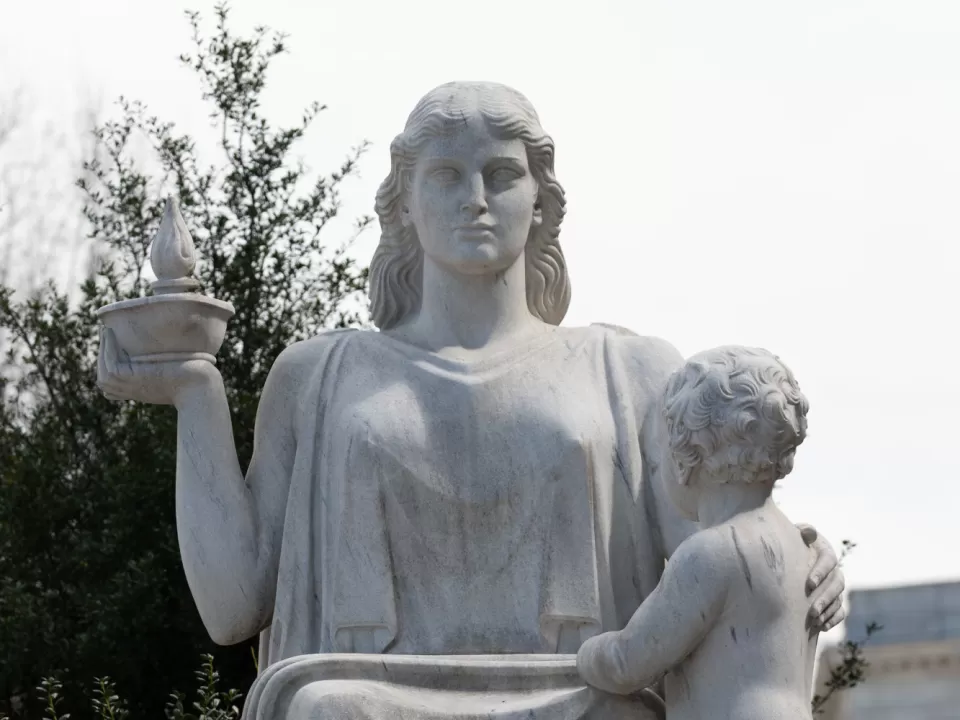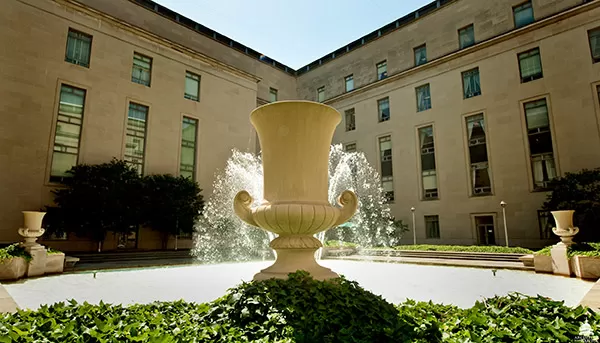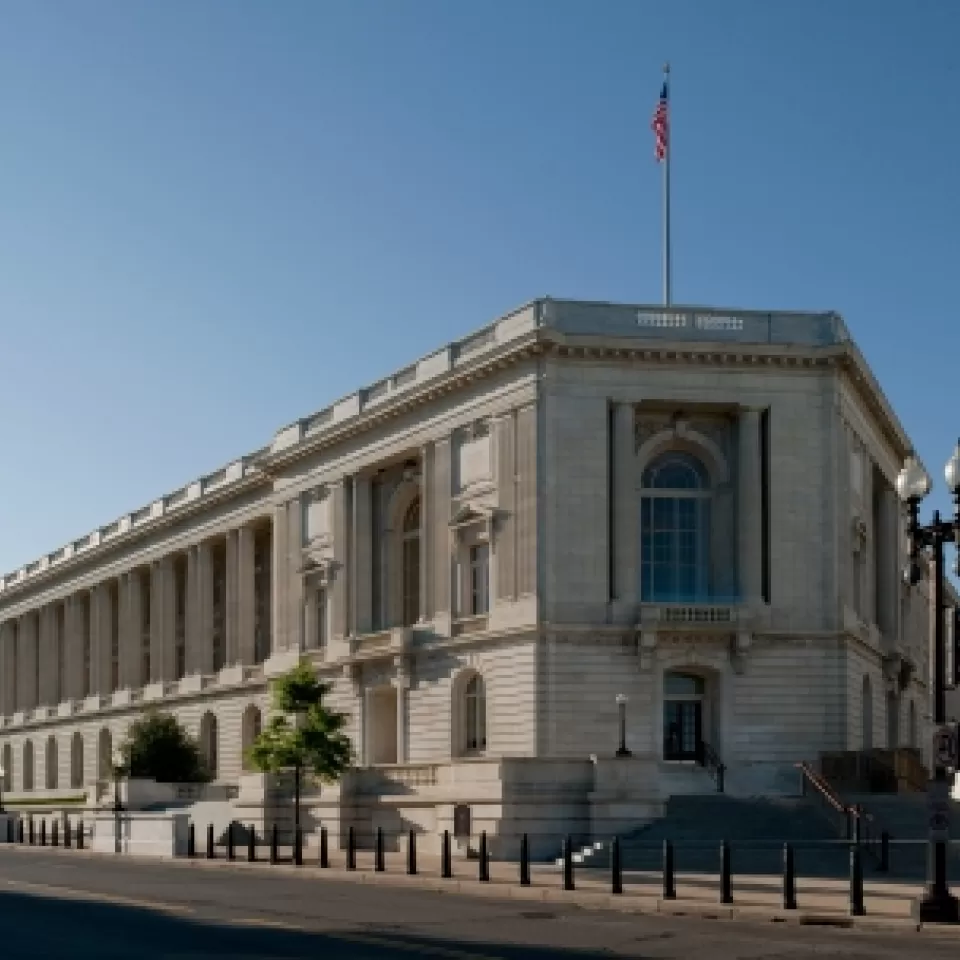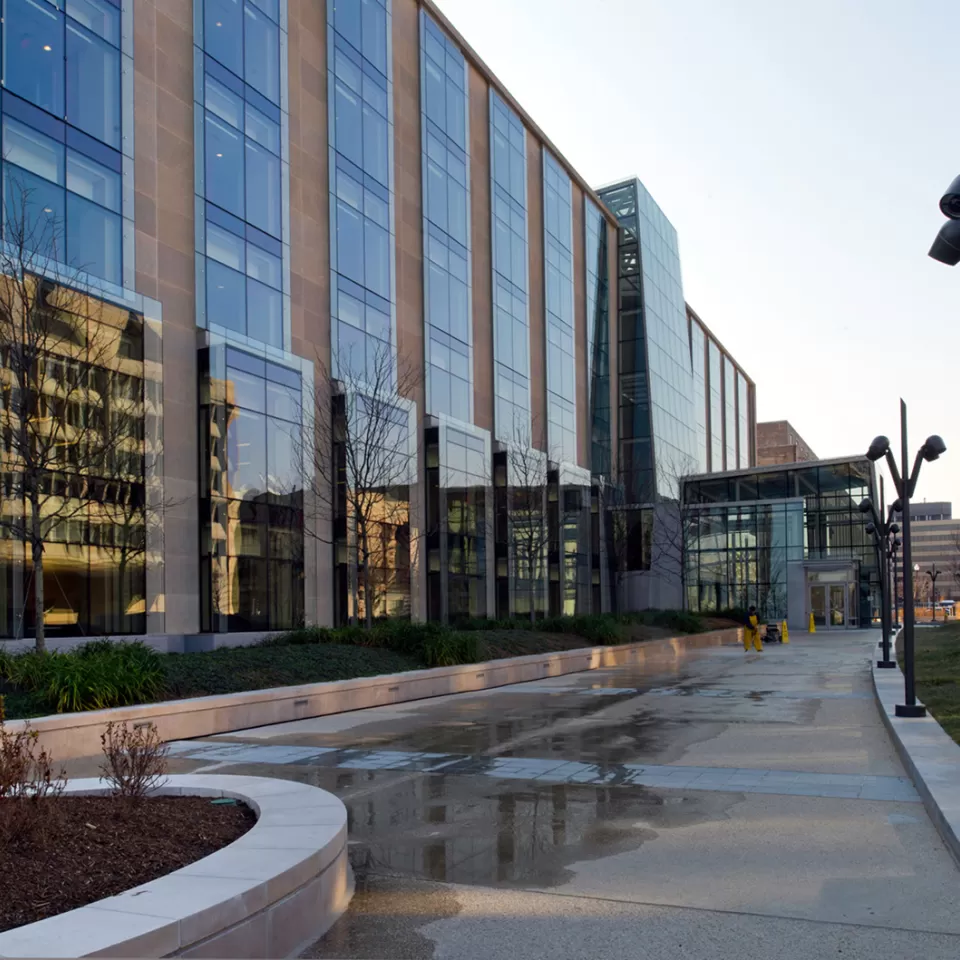
Highlight
Spirit of Justice
The female figure of the Spirit of Justice is represented by a figure likened to Pallas Athene, the great civic goddess who was also wise in the industries of Peace.
Image Gallery








House Office Buildings






